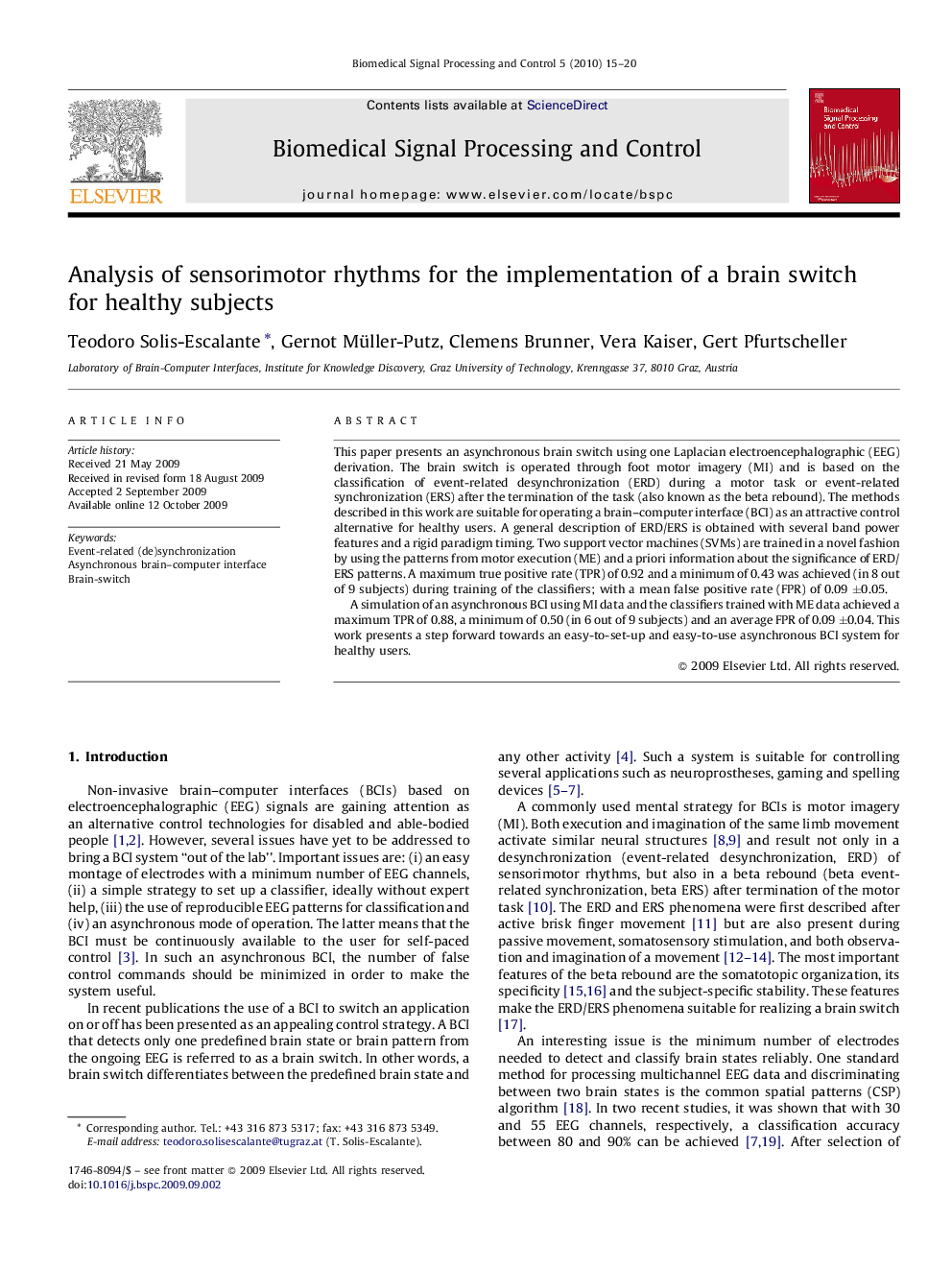| Article ID | Journal | Published Year | Pages | File Type |
|---|---|---|---|---|
| 557658 | Biomedical Signal Processing and Control | 2010 | 6 Pages |
This paper presents an asynchronous brain switch using one Laplacian electroencephalographic (EEG) derivation. The brain switch is operated through foot motor imagery (MI) and is based on the classification of event-related desynchronization (ERD) during a motor task or event-related synchronization (ERS) after the termination of the task (also known as the beta rebound). The methods described in this work are suitable for operating a brain–computer interface (BCI) as an attractive control alternative for healthy users. A general description of ERD/ERS is obtained with several band power features and a rigid paradigm timing. Two support vector machines (SVMs) are trained in a novel fashion by using the patterns from motor execution (ME) and a priori information about the significance of ERD/ERS patterns. A maximum true positive rate (TPR) of 0.92 and a minimum of 0.43 was achieved (in 8 out of 9 subjects) during training of the classifiers; with a mean false positive rate (FPR) of 0.09 ±±0.05.A simulation of an asynchronous BCI using MI data and the classifiers trained with ME data achieved a maximum TPR of 0.88, a minimum of 0.50 (in 6 out of 9 subjects) and an average FPR of 0.09 ±±0.04. This work presents a step forward towards an easy-to-set-up and easy-to-use asynchronous BCI system for healthy users.
